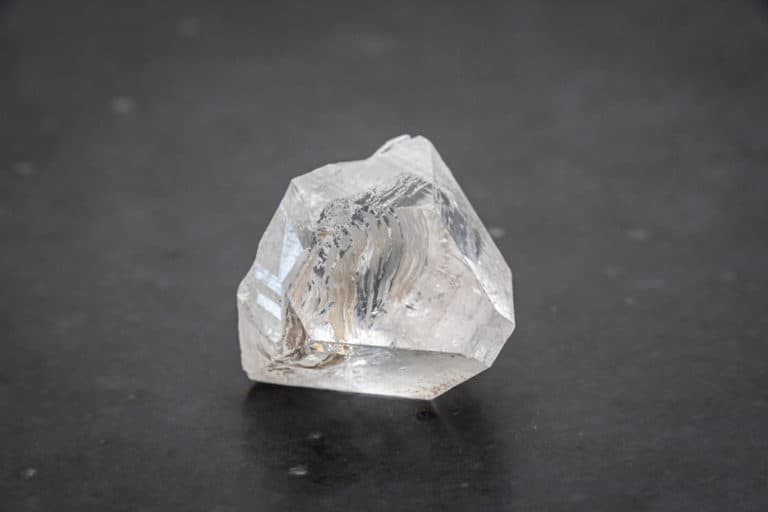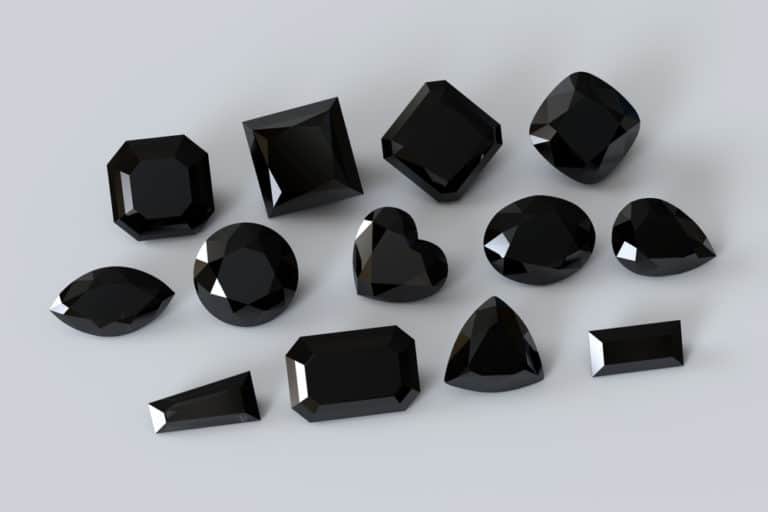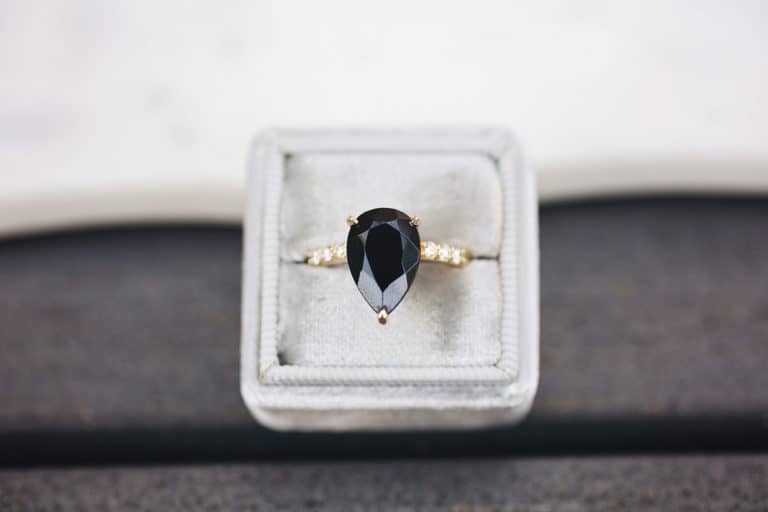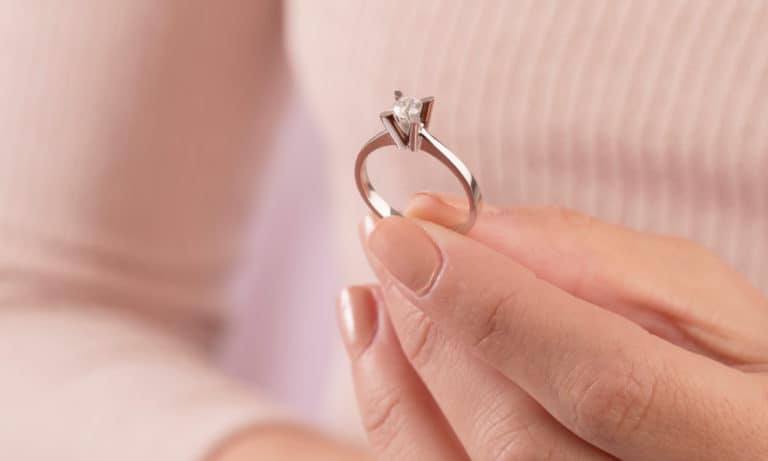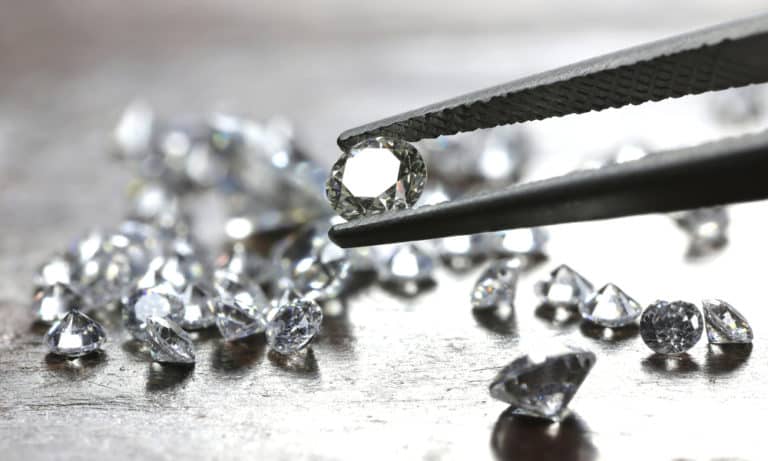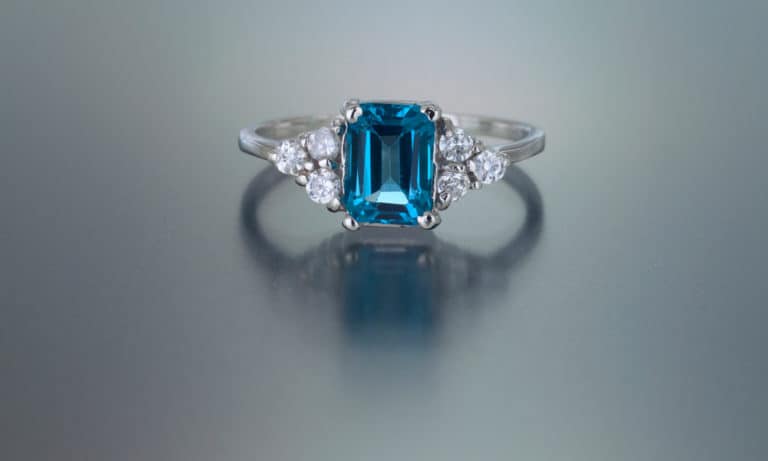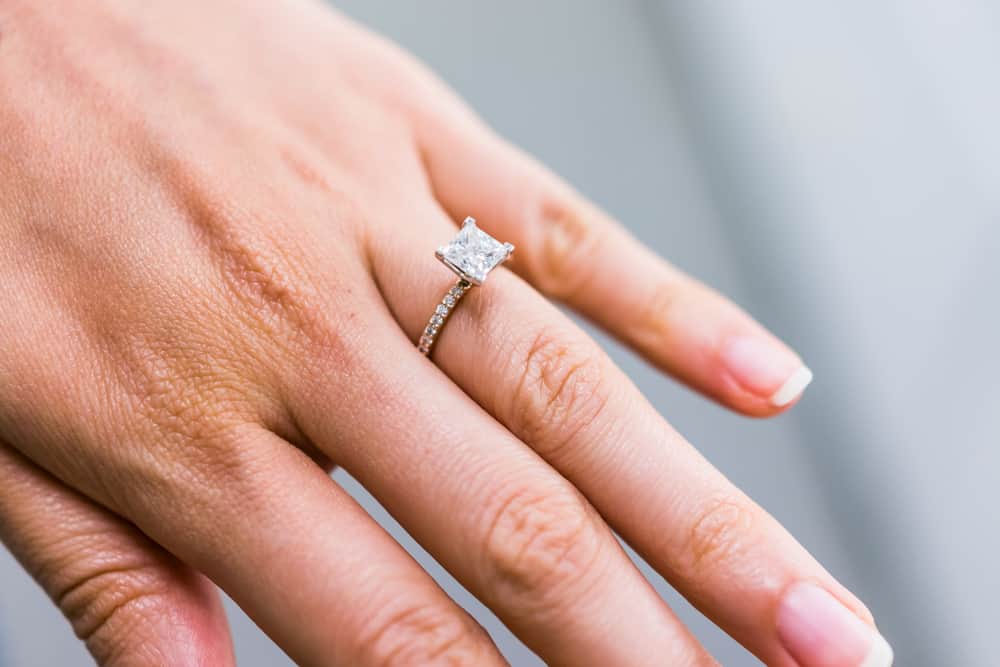
What is a radiant cut diamond? You will find jewelers taking the time to shape diamonds into beautiful and unique patterns. But if you see a radiant cut diamond, would you recognize it? And what makes it so special?
In this guide, I will talk about what a radiant cut is and the factors that affect it. I will also talk about its advantages.
Radiant Cut Diamond: What It Is?
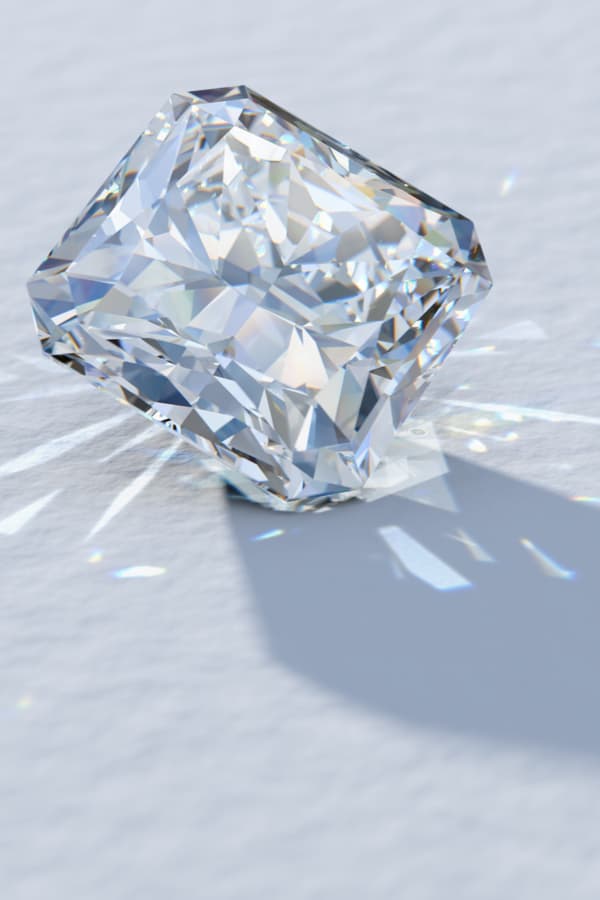
A radiant cut diamond is a non-traditional and symmetrically-cut diamond. It combines the emerald and round cuts, having trimmed corners to make it look bold. Yet it manages to remain delicate and alluring.
A diamond that has a radiant cut looks like a rectangle but with cut-off corners. You may also find it looking like a square but this is not so popular.
Radiant cut diamonds are popular with engagement rings, even today. It happens to suit the style of almost everyone, sophisticated or not.
Let me just say that a radiant cut diamond merges all the desirable and admirable traits of other more popular cuts. It is born out of a need to have something that is beautiful yet different.
History
The first radiant cut diamond appeared in 1977, a little under 40 years ago. And it came from the Radiant Cut Diamond Company, made by Henry Grossbard.
The diamond was an evolution in the way people viewed rectangular-shaped diamonds. This is because it became clear that a rectangular diamond could feature intricate patterns, both on the crown and on the stone.
Prior to this time, you wouldn’t find so much detail on other rectangular diamonds. A little here and a little there, that’s all.
The name says it all: it is radiant. The combination of the round cut and emerald cut makes it so brilliant and fiery. Somehow, though, it manages to keep demure and elegant.
Choosing a Radiant Cut Diamond
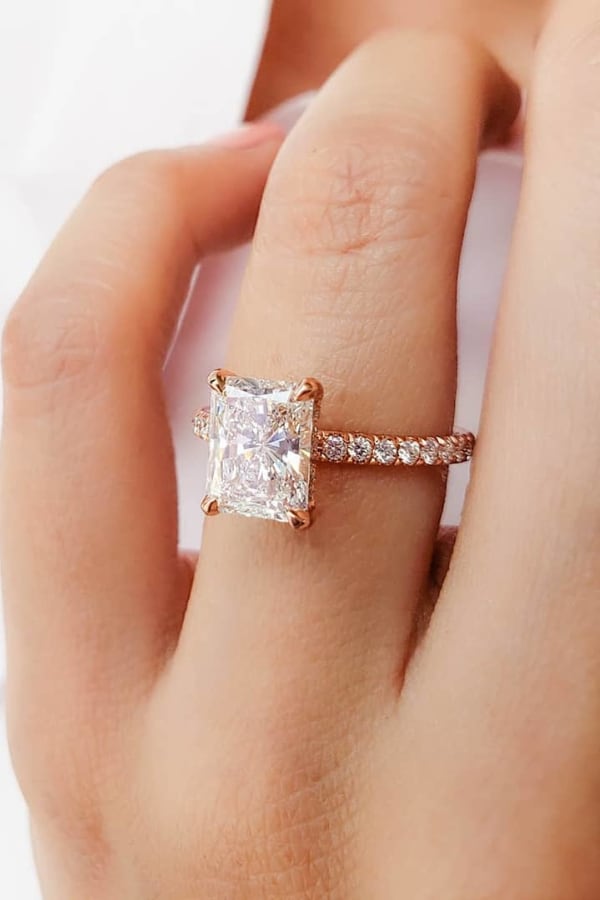
If you are in the market to buy a radiant cut diamond, you have great taste. Though it is not as brilliant as a round cut, it still comes off looking so brilliant you could term it a close second.
However, there are few factors that you should keep in mind. They will help you choose a great quality of the cut.
1. Depth and Table
Keep your search within the depth range of 61% and 67%. For table, keep it within the range of 61% and 69%. doing this will lead you to the best ones.
Depth refers to how weighty a diamond is. This is not to be confused with the carat. The depth determines whether or not a diamond is overweight or underweight. In layman’s terms, the depth shows the worth of a diamond.
A diamond with good value should have a total depth percentage of up to 63%. But if it should drop lower than this, it should not be below 55%.
Table refers to a diamond’s largest facet. It is through the table that light enters the stone and reflects. So, a table can determine how brilliant a diamond is.
Balance is key here. If the table is too wide, other facets would be small, ruining the stone. And if it is too small, the diamond wouldn’t show much brilliance and would look boring.
2. Ratio of the Length to the Width
What length to width ratio would you like? This is totally up to you but if you are going for a square-shaped radiant cut diamond, choosing a length to width ratio of 1.05 is ideal.
However, for rectangular-shaped ones, going for a 1.15 to 1.35 length/width ratio is ideal. You can create your own ratio and have others follow. But make sure it is something you won’t get tired of quickly.
3. Shape
Of course, the shape of the diamond should rank high on your list. So it is important to have pictures of what you want. Otherwise, have an understanding of what the right shape should be.
The corners should be evenly cut; none should be overboard. If they are even slightly overboard, they will lose their shape.
4. Color
A radiant cut does not hide color as well as a round cut. Nevertheless, if you are going to use it for a ring, it can hide color pretty well in any ring setting.
So, you may want to choose a diamond with some color since those tend to be cheaper. Setting it will reduce the appearance of the color.
Besides, even if you choose a high-grade colorless radiant cut, the ring setting would still give it a slight tint due to reflection. In the end, the stone would appear to have some color.
5. Bow-tie Effect
Many types of diamond cuts, the radiant cut inclusive, have this bow-tie look on them. It usually looks like a dark-colored band right across the diamond’s center.
If you pick a radiant cut diamond and the brilliance from this center is dull, it is poorly cut. However, if the sparkle or brilliance shows despite the dark band, it is well cut. Go for it.
This video is a review of radiant cut diamonds…
What Makes a Radiant Cut Diamond a Good Buy?
I am going to list some qualities of a radiant cut diamond. They throw more light on what it is.
Durability
The beveled corners of the radiant cut diamond give it an upper hand over other square cut diamonds.
It is easy to compare it to the princess cut. However, the princess cut cannot boast of the beveled corners. So, any diamond that has that cut chips easily, unlike the radiant cut.
Brilliance
Boy, is it brilliant! There are about 70 facets in one radiant cut diamond. So, it is able to catch and reflect light so effortlessly.
While it is not as brilliant as a round cut diamond, it comes very close. Therefore, if a round cut does not fit your style yet you love the brilliance and fire, say hello to the radiant cut.
Value
Little goes to waste when cutting the radiant cut due to its shape. In other words, most of the original diamond from the mine goes into the final product.
Because of this, a loose radiant cut diamond is less expensive than other cuts when priced per carat.
For instance, a round cut diamond could cost almost two times what a radiant cut diamond would cost. This is even though both stones have the same clarity, carat, and color.
I don’t know about you but I do appreciate value for money.
Size
More times than not, a radiant cut diamond appears bigger than other cuts.
You may place a radiant cut diamond side by side with an emerald cut diamond of the same carat. And you would get the impression that the radiant cut is bigger.
The illusion probably comes from the elongated shape of the radiant cut. It tricks your eye into thinking it is bigger than it actually is.
So, you may appreciate the look of a big rock on your finger. I know I would.
Comparing a Radiant Cut to Other Similar Cuts
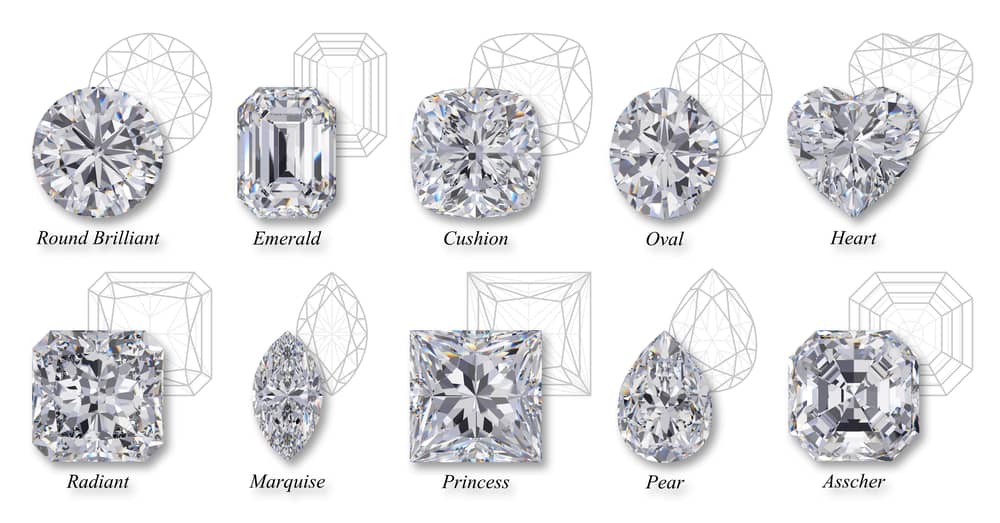
Remember I talked about how the radiant cut is a combination of the great traits of other cuts. It is much like a hybrid.
Now, let us place each cut side by side and see where each stands out:
Radiant Cut and Emerald Cut
A radiant cut diamond features straight sides much like an emerald cut diamond. But that is where the similarities end.
The radiant cut diamond has cropped or beveled corners. But the emerald cut diamond features sharp corners.
Then, there is the faceting. A radiant cut diamond can have many facets, sometimes as much as 70. This is why it is so brilliant. But an emerald cut diamond has fewer facets, though they tend to be large. It has step cuts.
As a result, it does not shine or have the brilliance of a radiant cut. Though beautiful, it looks toned down. However, the large facets show the diamond’s clarity better.
Radiant Cut and Cushion Cut
Both cuts are brilliant, belonging to the same brilliant cut group. In simple terms, the facets are such that they enhance brilliance.
When it comes to color and clarity, both cuts are about the same. The main difference lies in the shape.
A cushion cut diamond will appear oval. Its sides are rounded, taking it out of the rectangle or square family into the circle family. In other words, it is closer in resemblance to the round cut than the radiant cut.
Radiant Cut and Princess Cut
These two cuts are the closest in shape. When placed in a ring setting, you may not be able to tell one from the other if you can’t see the corners. The same is true if you have an untrained eye.
However, that is where the difference lies. While a princess cut diamond has sharp corners, the corners of a radiant cut diamond are beveled.
And a princess cut is always square. But a radiant cut could be square or rectangle.
Additionally, they both are in the same brilliant cut group, as the cushion cut.
Conclusion
A radiant cut diamond is not your everyday traditional type of diamond cut. Though it is gaining popularity, as evidenced by the number of celebrities wearing it, it is novel.
However, there is more to choosing a radiant cut diamond than just the cut. Consider:
- Depth and table
- Ratio of the length and width
- Shape
- Color
- Bow-tie effect
I hope you are now better equipped to know a radiant cut diamond when you see one. Got questions? Ask them in the comments section.

